Over the years I’ve done several senior photo shoots, including all three daughters of some good friends. So when I got a call asking me to photograph the youngest daughters in her wedding dress the week before the big day, of course I agreed. Did I let the fact I’d never done a wedding dress shoot like this before stop me? No. Because all photography comes down to three key things – subject, light and background. If you remember that, and know how to make those three elements work together, any assignment is possible. Of course, a few decades of experience helps too.
From the start, I saw three big challenges, none having to do with the photography itself. First, I was returning home late the night before after leading a workshop to Sedona (LINK). Second, I already had an assignment earlier that afternoon to cover a Royals/Dodgers game for the AP, and would need to go straight to the shoot from the game. And third, it was going to be a hot day, around 90 degrees. That meant I’d need to work fast, before the bride melted, and have towels handy to manage the moisture.
As you may know, I’m a big fan of planning. Which means I had my gear to cover baseball laid out before I left town to teach the workshop (Nikon Z 9, Nikkor 500mm f/4 lens, Nikkor 24-120mm f/4 lens, monopod, spare cards and battery, laptop and card reader, all in a Thinktank roller bag). I also had what I’d need for the bridal shoot packed and ready (Second Z 9, Nikkor 85mm f/1.8 lens, Nikkor 50mm f/1.8 lens, two Flashpoint eVolv 200 strobes, reflectors, umbrellas and stands). I’d simply change the card and battery on the baseball Z 9 when leaving the game and I’d be ready. Now to the shoot itself.
Of the three elements, the subject was the easy part. Camille is a beautiful young woman with a lovely dress. As with most outdoor portrait shoots, I planned to work with the available light, but would be ready to add light as needed (flash and/or reflector). For the background, Camille had chosen the location – a new spot for me – so I went online and did a little research. It looked to offer a few nice possibilities, and since I didn’t have time to scout it beforehand, I simply arrived 30-minutes early. That let me figure out the areas I’d use, then clean them up a bit. For a photographer, being early almost always pays dividends.
When Camille, her mother and friend arrived, I was already set up and ready to get to work. I’ll let the photos, and captions, tell the story from this point on:
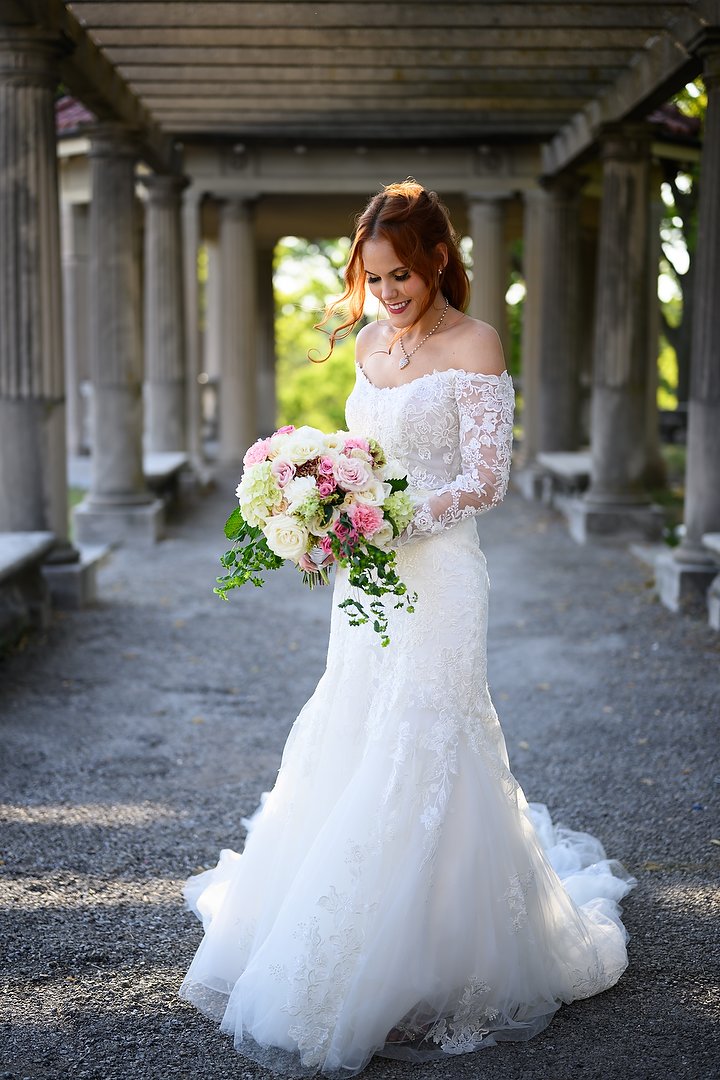
The location was great, giving me nice areas to use for framing. There were also some partially shaded areas which let me take advantage of the late-day light to backlight her. I knew going into this shoot I’d be using my “fast” lenses, shooting them wide open to create soft backgrounds. Nikon Z 9, Aperture Priority, Auto white balance, ISO 100, 1/640 at f/1.8 in Matrix metering, +0.7 EV, Nikkor Z 50mm f/1.8 S lens. Photo copyright Reed Hoffmann.
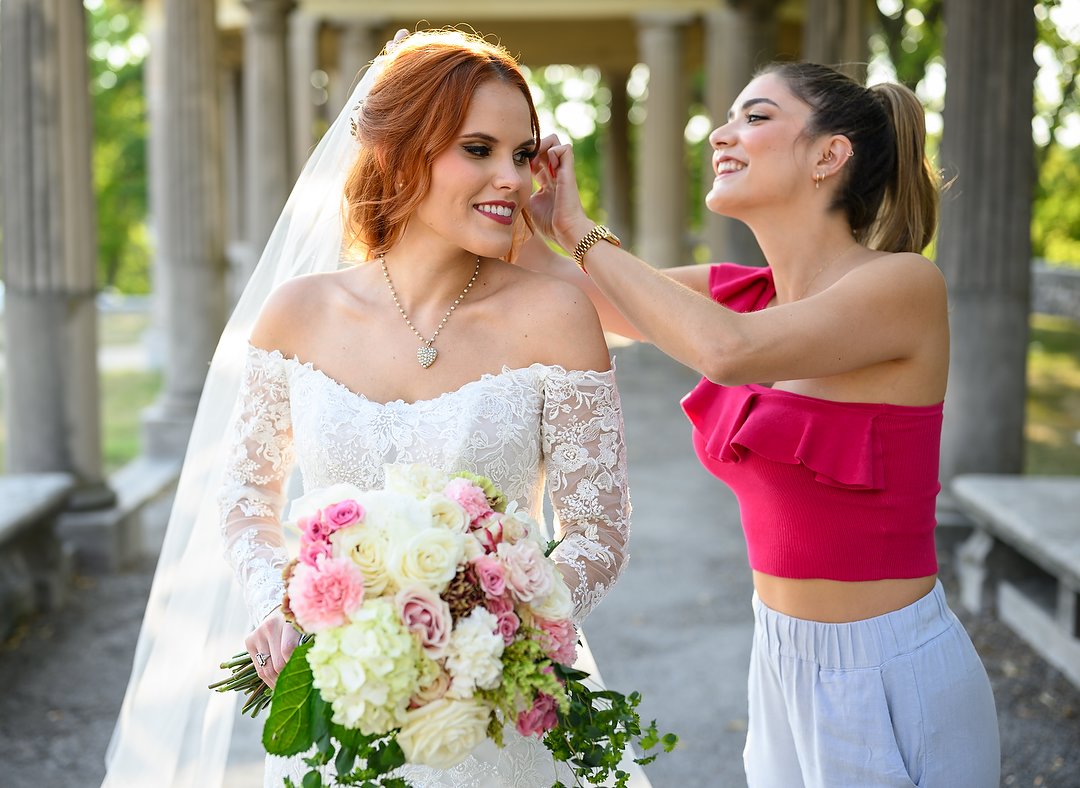
Whenever Camille’s friend or mom stepped in to help, I kept shooting, since those would be important photos for the couple and family too. You’ll notice I used plus exposure compensation on most of the available light photos. That was to help keep the dress bright white as well as create some nice highlights in the background. Nikon Z 9, Aperture Priority, Auto white balance, ISO 100, 1/160 at f/2.5 in Matrix metering, +1.3 EV, Nikkor Z 50mm f/1.8 S lens at 50mm. Photo copyright Reed Hoffmann.
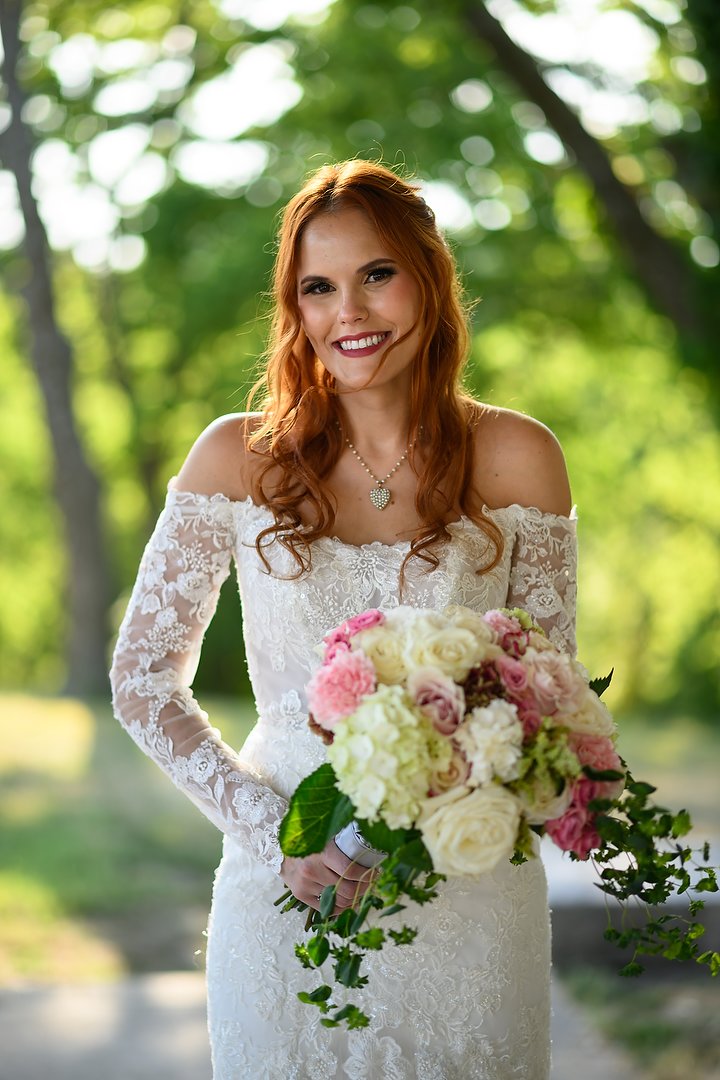
While the dress was the point of the shoot, that didn’t mean I had to do every shot as a full-body image. Closer photos would show the details better, and better highlight Camille’s natural beauty. Nikon Z 9, Aperture Priority, Auto white balance, ISO 100, 1/400 at f/1.8 in Matrix metering, +1.0 EV, Nikkor 85mm f/1.8G lens. Photo copyright Reed Hoffmann.
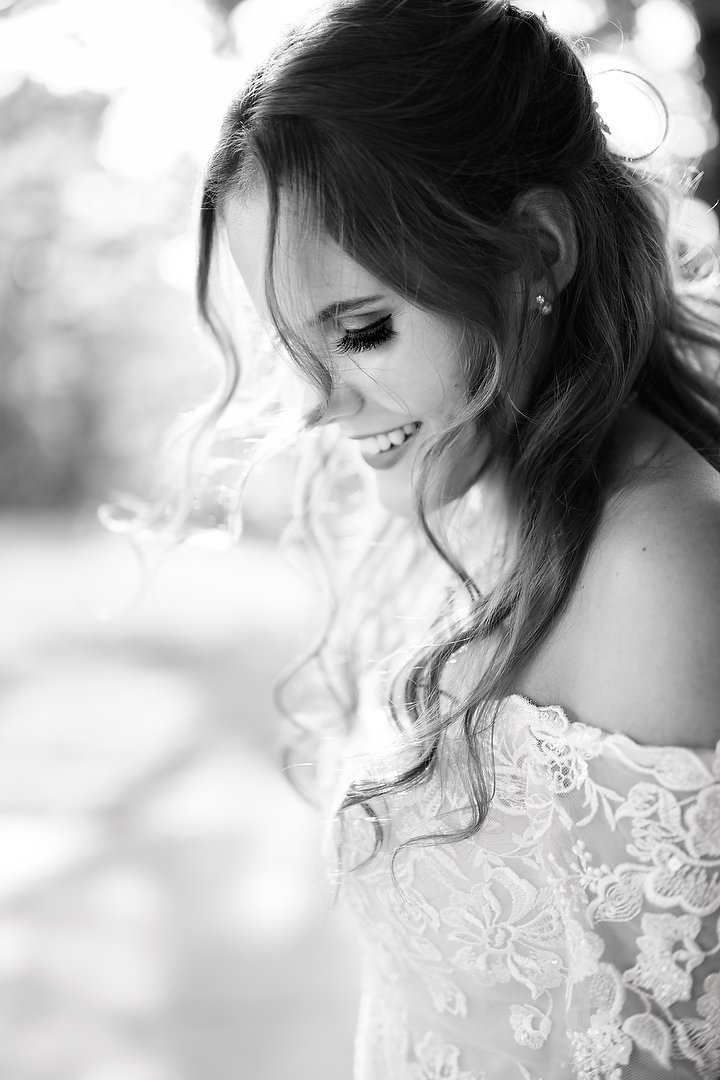
An even tighter shot, letting the wind have its way with her hair and magnifying the shallow depth of field created by the fast aperture lens. While I gave her the color version as well, I offered a few black-and-white options too. Nikon Z 9, Aperture Priority, Auto white balance, ISO 100, 1/200 at f/1.8 in Matrix metering, +1.3 EV, Nikkor Z 50mm f/1.8 S lens. Photo copyright Reed Hoffmann.
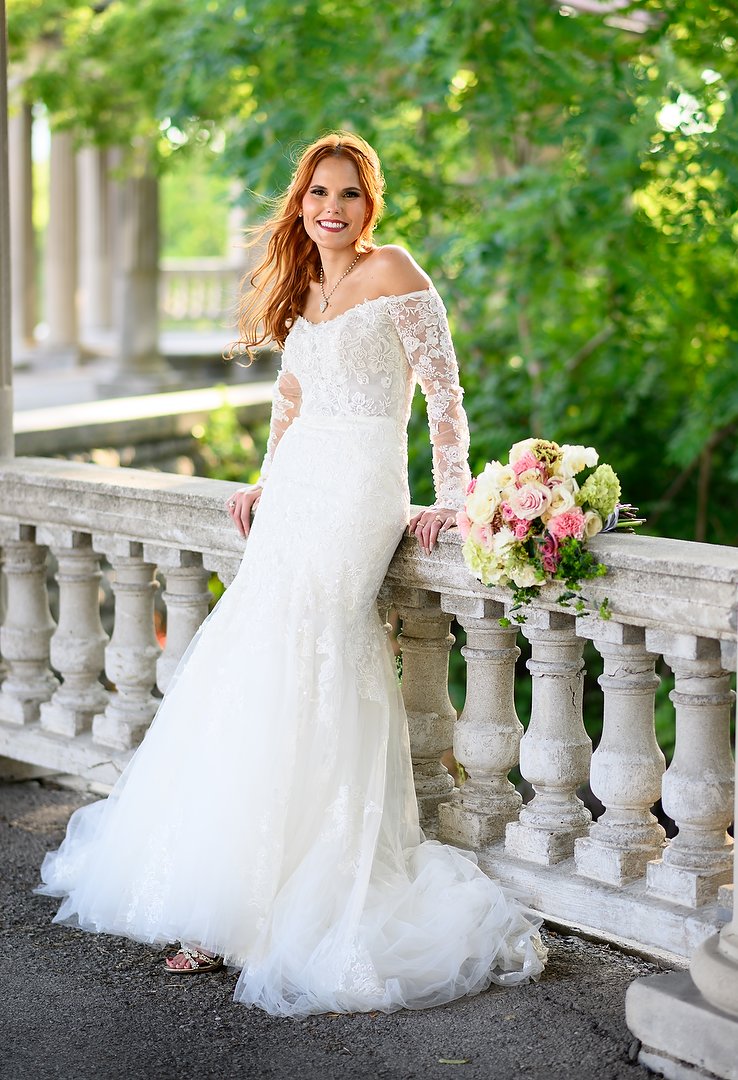
With the balustrades and columns at this location, I was able to use them not just for framing, but to create interesting angles. And when posing people, I always pay close attention to the hands and try for a variety of comfortable and natural placements. Notice that her right hand is visible? That’s because I asked her to move the hand further out from her body, to avoid having her look like she just had one arm. Nikon Z 9, Aperture Priority, Auto white balance, ISO 100, 1/160 at f/2.2 in Matrix metering, +0.7 EV, Nikkor 85mm f/1.8G lens. Photo copyright Reed Hoffmann.
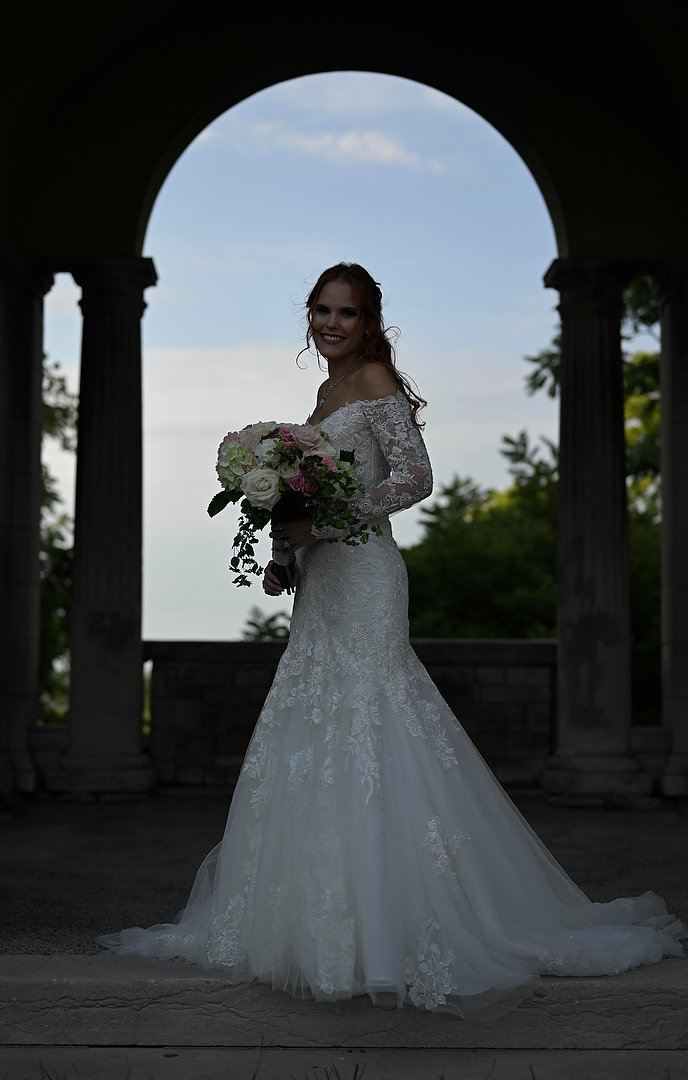
While I could have exposed for Camille, that would have overexposed the sky. But exposing for the sky left Camille dark. Now was the time to add some light. Nikon Z 9, Manual exposure, Auto white balance, ISO 100, 1/2500 at f/2.2 in Matrix metering, +0.7 EV, Nikkor Z 50mm f/1.8 S lens. Photo copyright Reed Hoffmann.
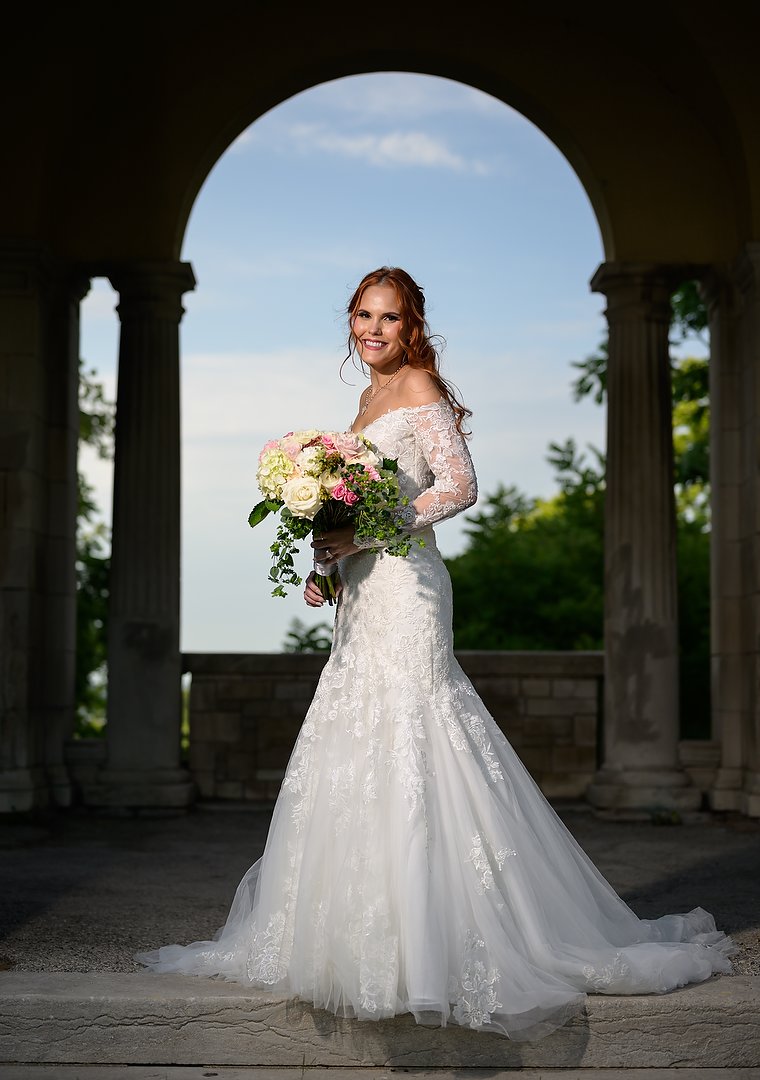
The difference here is that I added one of my Flashpoint eVolv 200 TTL strobes on a tall stand to light Camille from the left. By keeping the beam tightly focused on her I was able to keep the rest of the background dark. Nikon Z 9, Manual exposure, Auto white balance, ISO 100, 1/2500 at f/2.2, Nikkor Z 50mm f/1.8 S lens. Photo copyright Reed Hoffmann.
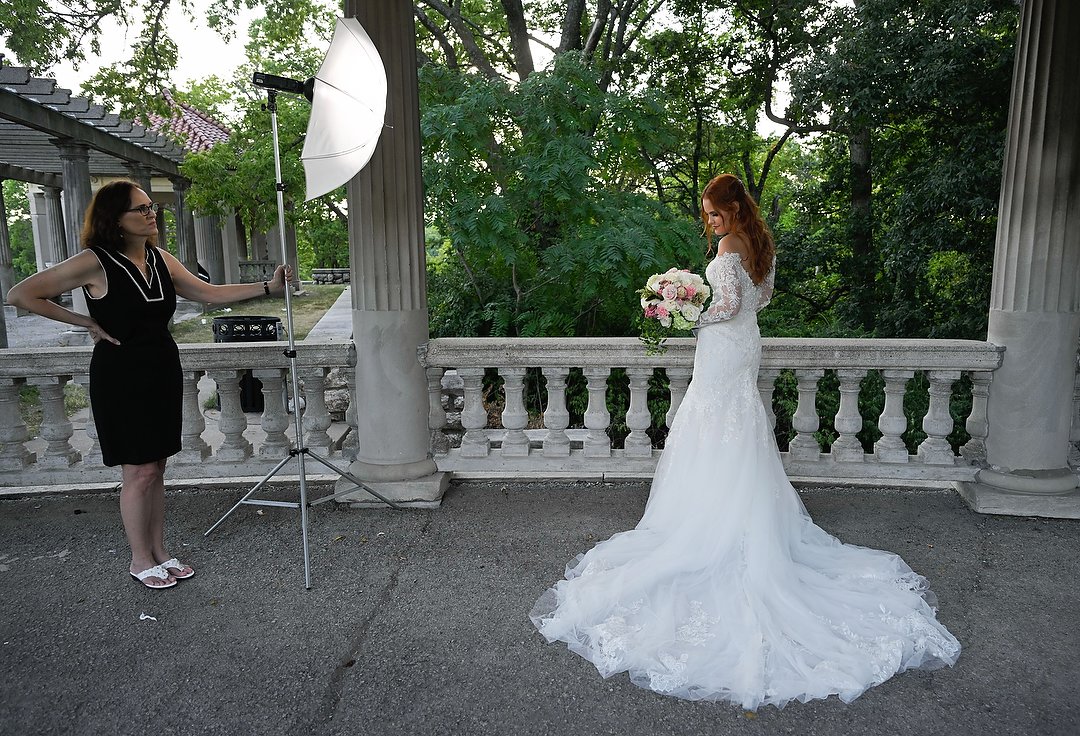
I also used an umbrella with the flash, creating a larger, softer light to bring out Camille’s face and gown while keeping the background dark. Her mom pitched in to make sure my light stand wouldn’t blow over in the breeze. Nikon Z 9, Manual exposure, Auto white balance, ISO 200, 1/250 at f/4, Nikkor Z 24-120mm f/4 S lens. Photo copyright Reed Hoffmann.
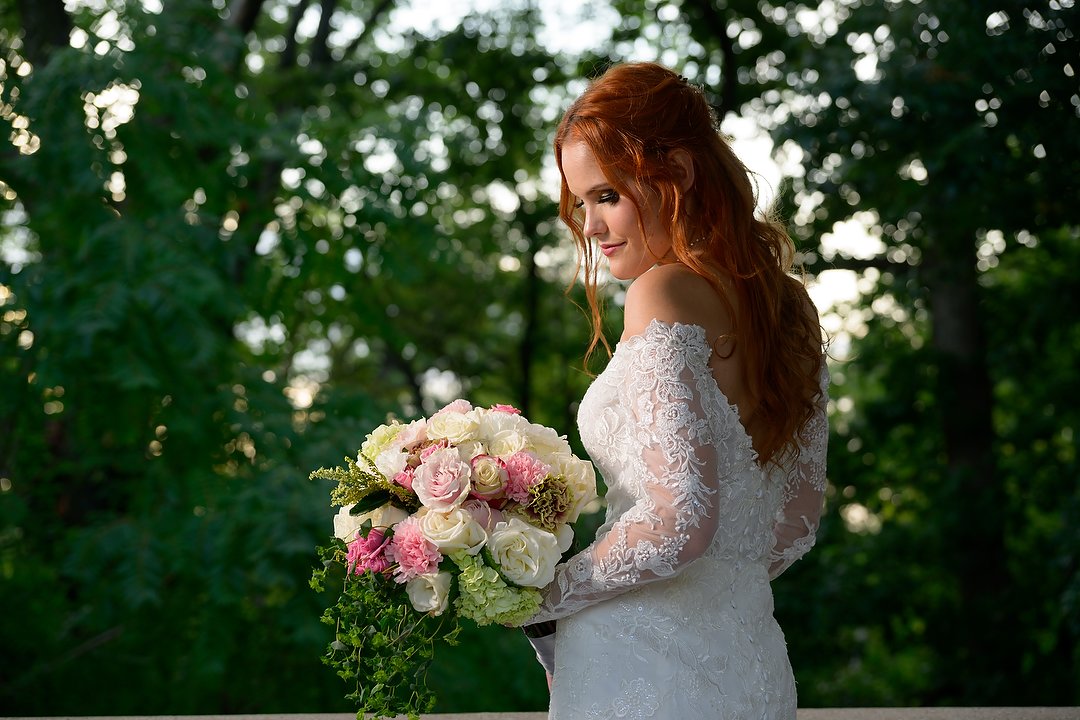
And here’s the result of using that flash with the umbrella. That gives me a larger light source (creating by firing it through the umbrella), which results in softer shadows in her face. Nikon Z 9, Manual exposure, Auto white balance, ISO 200, 1/250 at f/4, Nikkor Z 24-120mm f/4 S lens. Photo copyright Reed Hoffmann.
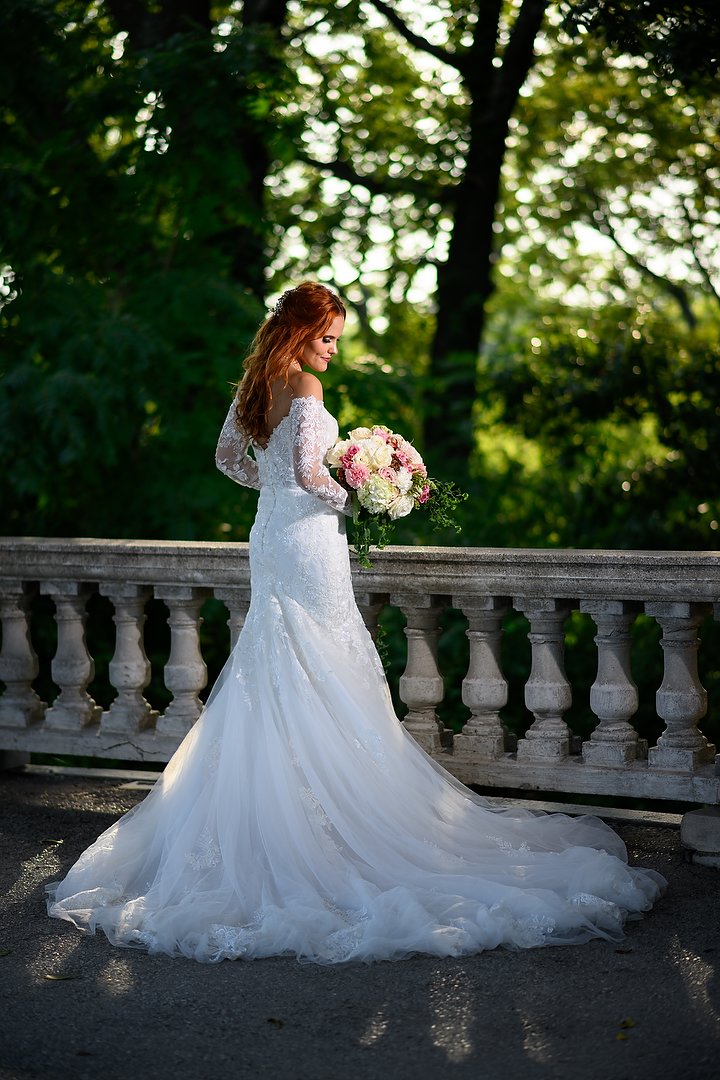
In this case I’m using what’s left of the sun as a backlight on the left side, and have the umbrella and strobe on the right to illuminate Camille and the gown. Nikon Z 9, Manual exposure, Auto white balance, ISO 100, 1/800 at f/1.8, Nikkor 85mm f/1.8G lens. Photo copyright Reed Hoffmann.
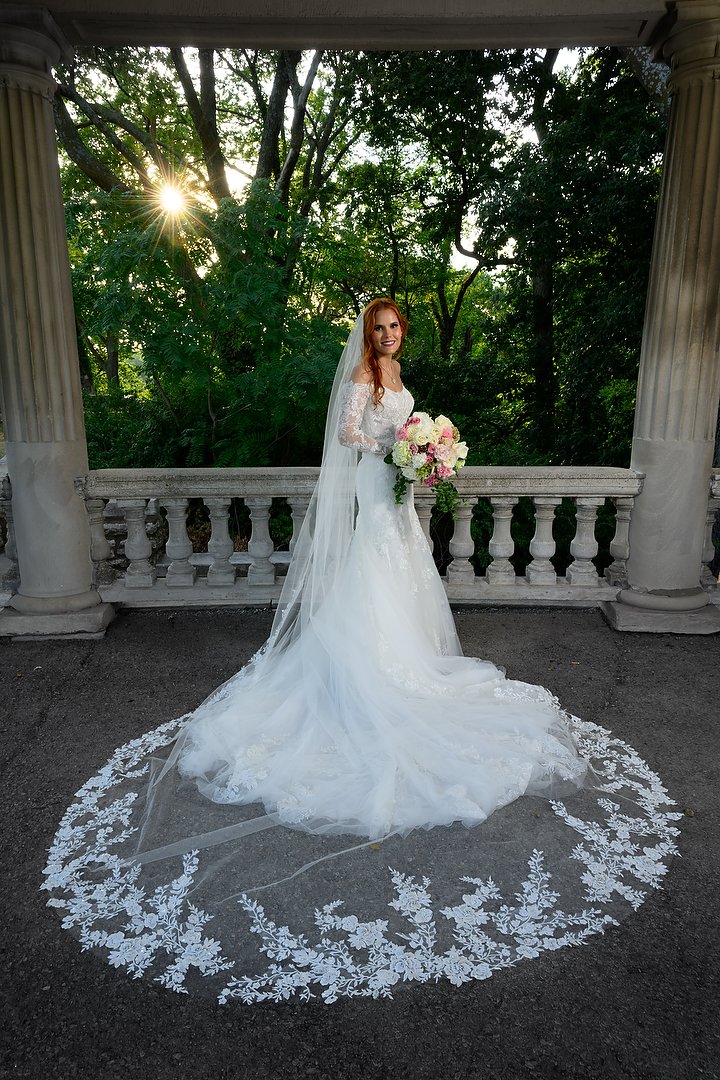
To show off the veil, I suggested we create a circular pattern with it on the dark flooring. Lit again with the light and umbrella to the right, I’m underexposing the ambient light to to make the foliage behind her go dark. I also shifted to a small aperture to create a “sunstar.” To manage that exposure, I needed to use a low shutter speed, which required Camille to hold very still. Nikon Z 9, Manual, Auto white balance, ISO 100, 1/13 at f/16, Nikkor Z 24-120mm f/4 S lens at 24mm. Photo copyright Reed Hoffmann.
(If you like this story, please share it with your friends and let them know about the links on photography that I post on my business Facebook page. I’m also on Instagram and Twitter, @reedhoffmann. And if you’re curious about the workshops I teach, you can find them here. And, you can subscribe to this blog on my home page.)

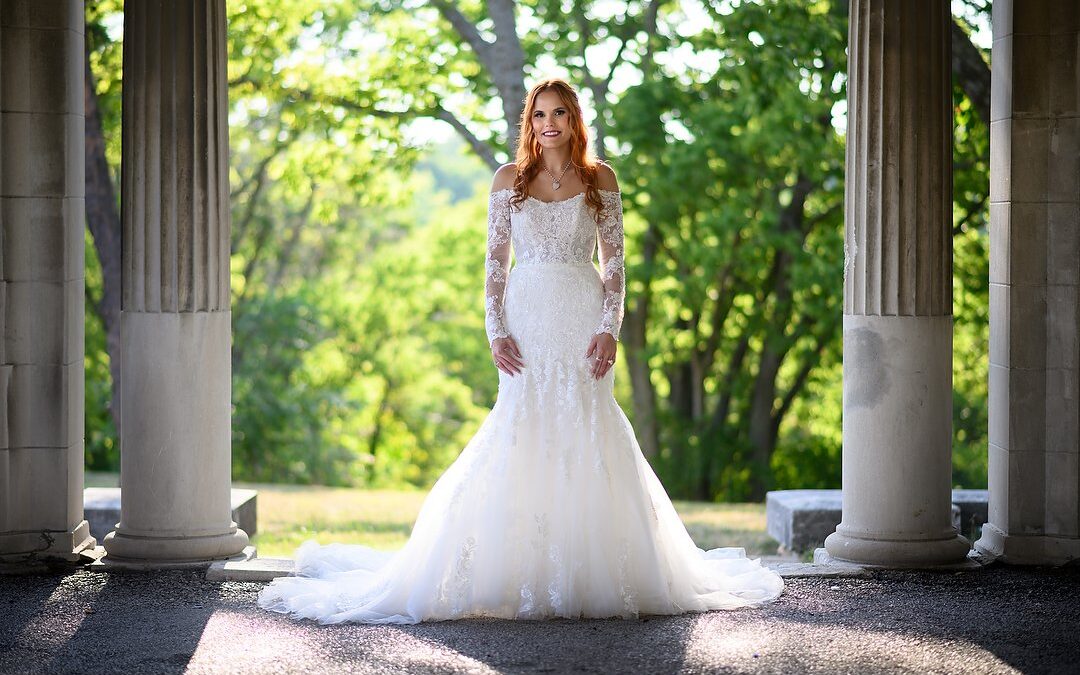
Reed, great story, great tips and of course terrific photos!…Now they’ll want you to do the wedding!
Great photos. I’ll be shooting a relatives wedding in October and this is a great primer. Thanks!
Hope you have fun doing it. Long day, but I’ve always enjoyed doing those.